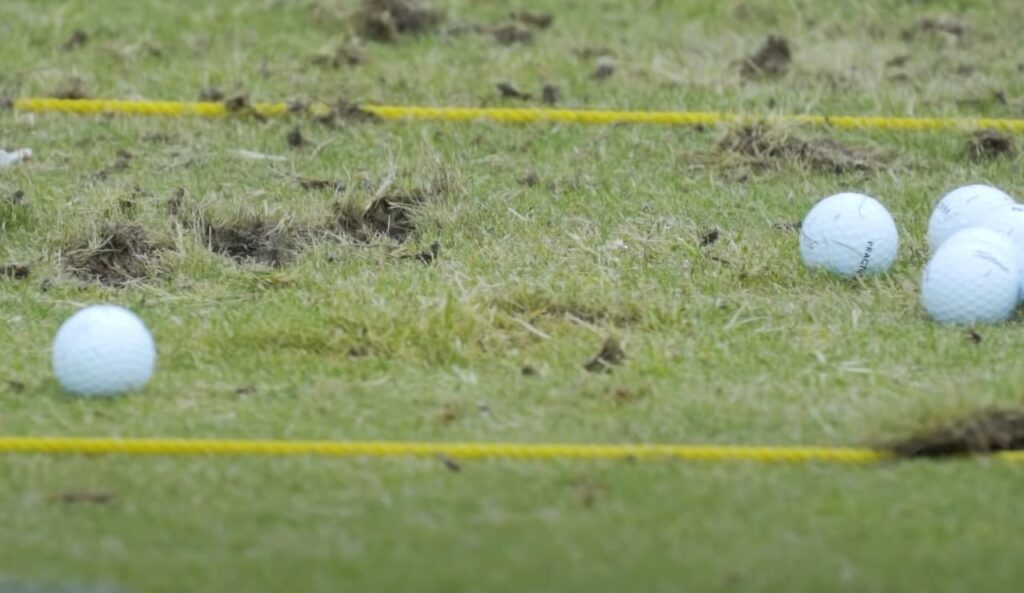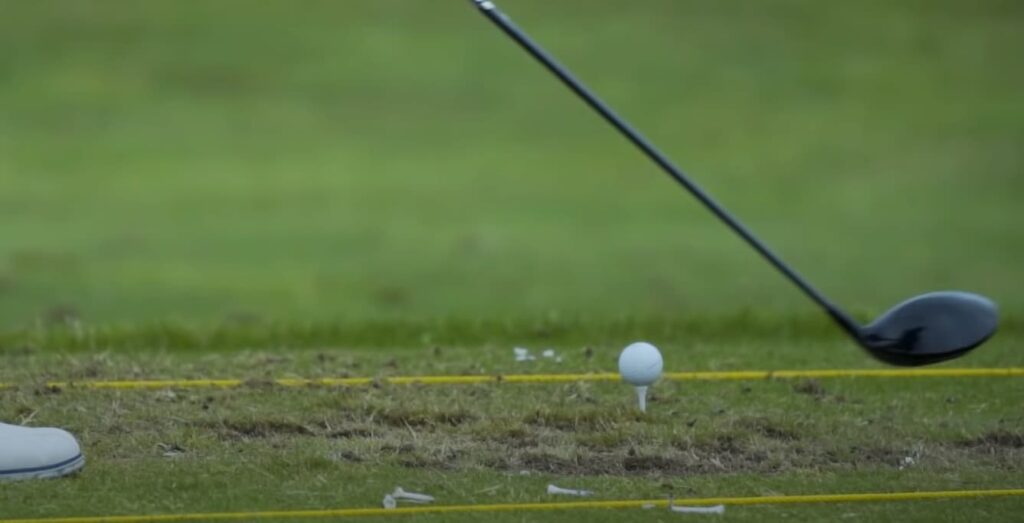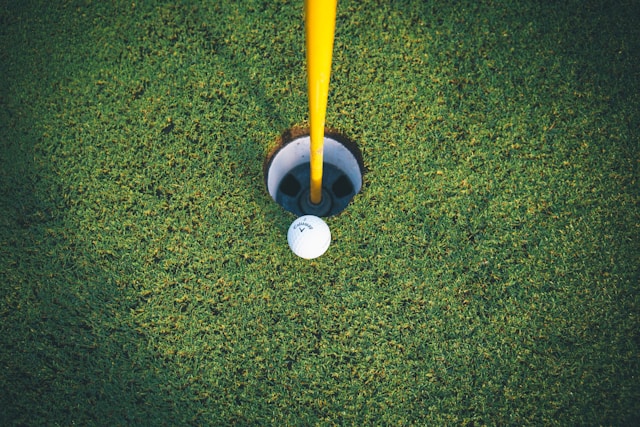Golf is one of the most popular sports in the world. It is enjoyed by people of all ages and genders. But when did this sport become an Olympic event?
The Olympic Games have been held every four years since Paris in 1900 when golf was introduced.
Golf championships were also on the Olympic program in St Louis in 1904.
It had been scheduled to take place at the Olympic Games in London in 1908, but it was canceled.
Then golf subsequently returned to the roster for the Rio Olympics in 2016, set to be hosted once again.
In this blog post, we will explore the history of golf and discuss when it became an official Olympic sport.
History Of Golf At The Olympic Games
Entry (1899)
The first official attempt to enter golf into the Olympic Games was made in 1899 by Scottish-American business magnate and early golf enthusiast, Robert Simpson. His proposal was met with much opposition from other countries, who felt that golf was too much of a “gentleman’s game” to be played at the Olympics.
Simpson’s proposal was ultimately rejected and it wouldn’t be until nearly 60 years later that golf would make its debut as an official sport at the Summer Olympics.
Golf first became an exhibition sport at the 1900 Summer Olympics in Paris, France.
It consisted of men’s and women’s individual stroke play events held at the Cercle des Golfes de Saint-Cloud, west of the French capital.
The winners of the men’s and women’s events were Charles Sands (USA) and Margaret Ives Abbott (USA), respectively. Both American golfers were members of the St. Andrews Golf Club in Yonkers, New York, which is now defunct.
In 1904, golf was once again considered an official sport for the Summer Olympics but this time it was up against baseball and rugby union for a spot on the program. Golf lost out to both sports and would not be played at the Olympics again until over a century later.

Removal (1908)
Organizers planned a 108-hole stroke play event at three courses in London, England in 1908. Golf was becoming increasingly popular which is why the organizers thought that Royal St. George’s, Prince’s GC, and Cinqueports GC would be great venues for the tournament. However, because of a disagreement between the Royal and Ancient Golf Club of St Andrews and members of the Olympic committee over who could compete, all British participants pulled out.
Furthermore, this resulted in there being too few entries overall so organizers had to cancel the event. Seemingly, George Lyon from Canada had already started his journey to London by then. He ended up winning and getting the gold medal even though he didn’t technically participate.(Since no one else showed up.)
The first golf game in Sweden was scheduled to take place in 1912, but there was little interest.
In 1920, the Antwerp Golf Association planned a tournament at Cappelen’s Golf Club, but it was called off because of a lack of entries.
In 1936, a golf match took place at Baden-Baden, Germany as an exhibition just before the Olympics.
Re-Entry (2016)
It wasn’t until 2016 that golf returned to the Summer Olympics, this time as a part of the Rio de Janeiro games in Brazil. The sport was once again met with some opposition but ultimately prevailed and has been played at every Summer Olympics since.
The return of golf to the Olympics was largely thanks to the efforts of two men: Mark McCormack and Arnold Palmer. McCormack, the founder of IMG, is credited with helping bring golf back into the Olympic fold while Palmer served as an honorary member of The International Olympic Committee (IOC) and was a vocal advocate for golf’s inclusion in the Games.
The Complicated Relationship Between Golf And The Olympics
The history of golf and the Olympics is a complicated one. Golf was first included in the 1900 Summer Olympics, but it was then dropped from the 1904 games.
It regained official status in the 2016 Rio de Janeiro Summer Olympics after a 112-year hiatus.
But even then, there was controversy surrounding its inclusion. Some athletes and fans argue that golf is not a true sport and that it should not be included in the Olympics. However, others believe that golf is a perfectly valid sport and are happy to see it back in the Olympics.
It was considered safe for the games to continue, and for individuals from around the world to visit Brazil, but many male golfers disputed that. Dustin Johnson, Jordan Spieth, Hideki Matsuyama, Jason Day, Shane Lowry, Rory McIlroy, and Graeme McDowell all withdrew. Others followed their example.
The men’s event eventually fell to the level of a fall series competition, far short of what organizers had anticipated when Woods so confidently predicted it in 2009.
Everything flows from there, to 2021 and the 2020 Olympics, when something similar occurred with the men’s competition.
After receiving years of questions from the press about commitment and postponing for 12 months, the qualifying period for men’s Olympic golf wrapped up on Father’s Day during the U.S Open.
The next day was a crucial one for International Golf Federation as they needed to confirm the final field of Olympians. However, many athletes passed on competing in Olympics within the next 24 hours.
Tyrrell Hatton, the No. 11 player in the world, was originally chosen to represent England in the IGF, but he declined and passed it down to fellow Brit Matthew Fitzpatrick.
When Fitzpatrick also turned it down, Englishman Lee Westwood had already dismissed the Games months prior – so the honor of representing England dropped all the way down to Tommy Fleetwood, who was originally just a replacement for those two other players.
After that, Sergio Garcia tweeted an explanation in Spanish saying he would also skip the event. He didn’t tweet another message in English like he usually does. Only a few days after embracing Jon Rahm on the driving range at Torrey Pines, Spaniard Rafa Cabrera-Bello declined to participate as well.

Olympic Golf Trivia
Golf first became an official Olympic sport at the 1900 Summer Olympics in Paris, France.
However, it was not included again as an official sport until the 2016 Summer Olympics in Rio de Janeiro, Brazil. There are currently two golf events that are contested at the Olympics: men’s individual and women’s individual.
The International Olympic Committee had originally rejected golf’s application to become an official sport for the 2016 Summer Olympics because of the sport’s small number of global participants.
However, golf was eventually added to the program after much campaigning from various governing bodies and organizations within the sport.
Some of the biggest names in golf have competed at the Olympics, including Tiger Woods, Jordan Spieth, and Justin Rose. Golf is one of the few sports where athletes from all over the world can compete against each other on a level playing field.
FAQ
How long has golf been in the Olympics?
Golf first appeared as an official sport in the 1900 Summer Olympics. However, it was then dropped from the 1904 Summer Olympics. It was not seen again as an official sport until the 2016 Rio de Janeiro Summer Olympics.
What is the “weirdest” Olympic sport?
Chances are when you think of the Olympics, certain sports come to mind. Track and field, swimming, gymnastics, and basketball – are all fan-favorite events that have been part of the games for many years. But what about some of the lesser-known sports? Like golf, for instance. When did golf become an Olympic sport?
The answer may surprise you: golf was actually a part of the very first modern Olympics in Athens back in 1896. However, it was dropped from the games after just two appearances due to lack of popularity (and also because many countries did not have any formal rules or governing bodies for the sport at that time). It wouldn’t be until over 100 years later that golf would make its way back to the Olympics.
In 2016, golf returned to the games for the first time since 1904 with both men’s and women’s individual competitions. And while some may still consider golf a “weird” Olympic sport, there’s no doubt that it has come a long way since its humble beginnings. Who knows – maybe we’ll even see a gold medal for America in 2016!
Why is golf not a sport?
Golf does not fit the definition of sport because it doesn’t require enough physical exertion. For instance, playing golf for one hour only burns 360 calories when you walk and carry your own clubs.
That’s significantly less than other competitive sports like soccer (900 calories per hour) and football (727 calories per hour).
Golf is also a game of precision and strategy, not physical strength. The average PGA Tour player only hits the ball 280 yards, which is shorter than the average drive of an amateur player. Professional golfers rely on their experience and technique to make up for their lack of power.

Will golf be in the 2024 Olympics?
The game of golf was included in the Olympics in 1900 and 1904 and made a comeback more than 100 years later for Rio 2016 and Tokyo 2020. The world’s best golfers will return to Paris in 2024 to compete for the gold medal once again.
The sport has a long and storied history, dating back many centuries. It is thought that the game was first played in Scotland in the 15th century, and it quickly became popular among the nobility and royalty.
Golf made its way to the Olympics in 1900 when it was included as an exhibition sport at the Paris Games. The men’s competition was won by Charles Sands of the United States, while Margaret Abbott of America took home the gold in the women’s event.
Are pros allowed in Olympics golf?
The 2009 International Olympic Committee’s decision to add golf has been celebrated by many, however, this does not mean it is a good choice for professional golf as a whole.
Although there may be some benefits for the Olympics, they do not outweigh what could happen to professional golf.
Is Tiger Woods an Olympian?
Tiger Woods has never played in the Olympics because golf wasn’t an Olympic sport until 2016. Golf was last included in the summer Olympics 112 years ago, but it made a comeback at the Rio Olympics. Woods is considered one of the greatest golfers ever, but he won’t be able to add an Olympic medal to his list of accomplishments.




